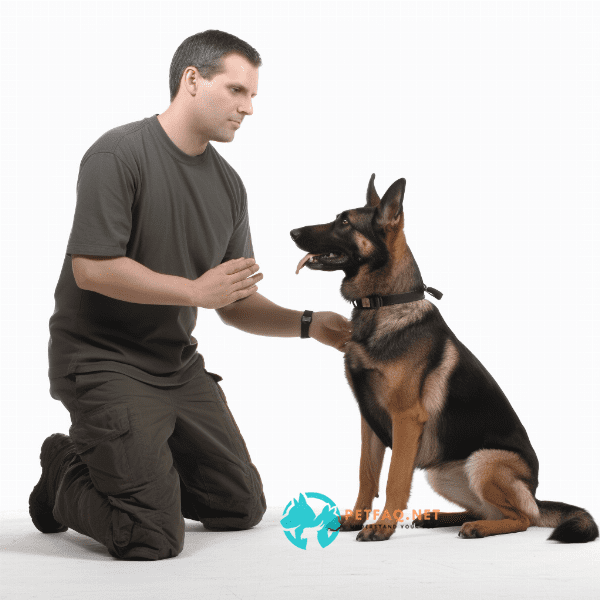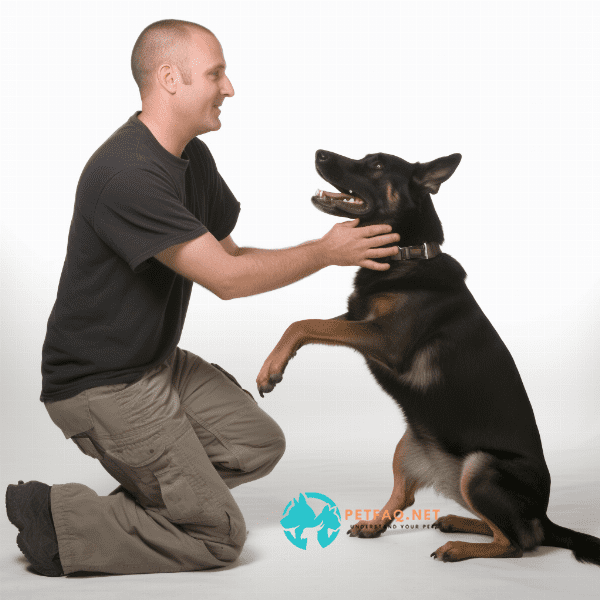Table of Contents
- Understanding the Instincts of Hunting Dogs
- Essential Commands for Hunting Dogs
- Choosing the Right Training Method for Your Hunting Dog
- Conditioning Your Hunting Dog for Physical Fitness
- Developing Hunting Skills through Real-Life Scenarios
- Tips for Successful Bird Hunting with Your Trained Dog
- Troubleshooting Common Training Challenges
- Building a Strong Bond with Your Hunting Dog through Training.
Understanding the Instincts of Hunting Dogs
Understanding the instincts of hunting dogs is critical to effective training. Hunting dogs are bred for specific purposes such as pointing, retrieving, flushing, or tracking. Each type of hunting dog has its unique set of instincts that can help or hinder their training. For example, a pointing breed like the German Shorthaired Pointer has a strong natural tendency to freeze when it senses game. In contrast, a retriever like the Labrador Retriever has a strong urge to retrieve and can be trained to bring back a wide variety of game, both in and out of the water.
It’s important to note that not all hunting dogs are the same, and their instincts may vary even within a breed. As a trainer, you need to be aware of your dog’s unique characteristics to design a training program that caters to their specific strengths and weaknesses. A successful hunting dog training program should focus on honing the dog’s natural instincts and building on their inherent drives.
Understanding the instincts of your hunting dog is the first step in developing an effective training plan. By recognizing their natural tendencies, you can work to enhance their skills and create a solid foundation for their hunting abilities. Whether your dog is a pointing breed, a retriever, or a tracker, a well-designed training program can help them reach their full potential as a hunting companion.
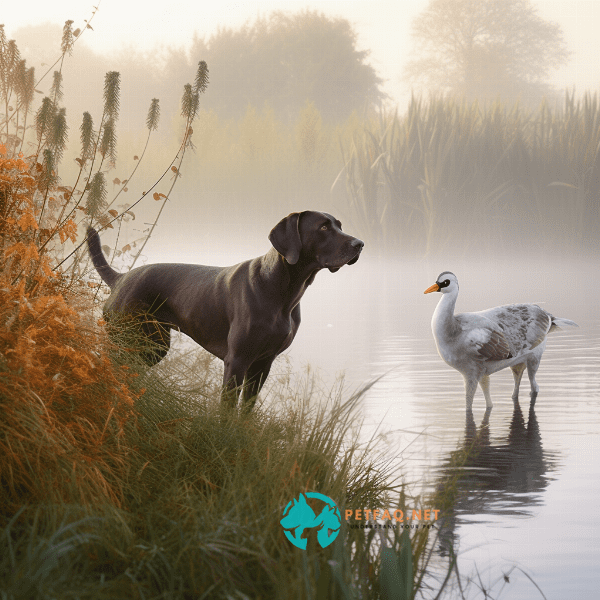
Essential Commands for Hunting Dogs
Essential commands are the building blocks of any effective hunting dog training program. These commands help your hunting dog understand what is expected of them in different hunting scenarios and keep them under control. Here are some of the critical commands every hunting dog should know:
1. “Come” Command – This command is crucial for every hunting dog to know. It ensures that your dog comes back to you when called, even if they are off-leash.
2. “Sit” Command – The “sit” command helps your dog stay put in one spot, whether it’s to steady their aim or wait for further instructions.
3. “Stay” Command – The “stay” command is essential to keep your dog in place and prevent them from chasing after game until you give them the signal to do so.
4. “Heel” Command – The “heel” command helps your dog to stay by your side and maintain a specific distance from you while walking.
5. “Fetch” Command – The “fetch” command is crucial for retrieving breeds and helps them bring back game to you.
These are just a few examples of essential commands for hunting dogs. Your dog may need to learn additional commands based on your hunting style and their strengths and weaknesses. Remember to be patient and consistent in training your hunting dog. Once they learn these essential commands, you’ll be well on your way to a successful hunting trip with your well-trained companion.
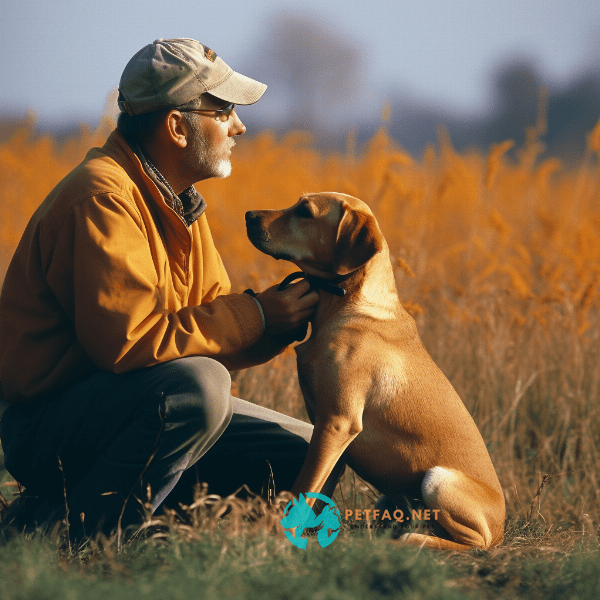
Choosing the Right Training Method for Your Hunting Dog
Choosing the right training method is crucial to ensure the success of your hunting dog training program. There are different training methods available, each with its unique advantages and disadvantages. Here are some popular training methods used for hunting dogs:
1. Positive Reinforcement Training – This method involves rewarding your hunting dog for good behavior and ignoring negative behavior. This training method is widely used and has proven to be very effective for most hunting dog breeds.
2. Clicker Training – This method uses a clicker to signal good behavior and reward your hunting dog with a treat. This technique is ideal for dogs that are easily distracted and require more focused attention.
3. E-Collar Training – This training method involves the use of an electronic collar to correct unwanted behavior. This technique is generally reserved for more stubborn or hard-to-train hunting dogs.
4. Traditional Training – This method involves using physical discipline to correct unwanted behavior. This technique is gradually being phased out as positive reinforcement training methods are becoming more popular.
It’s essential to consider your dog’s temperament and learning style when choosing a training method. Each dog is unique and may respond differently to various training techniques. Whatever method you choose, consistency and patience are key to successful hunting dog training.
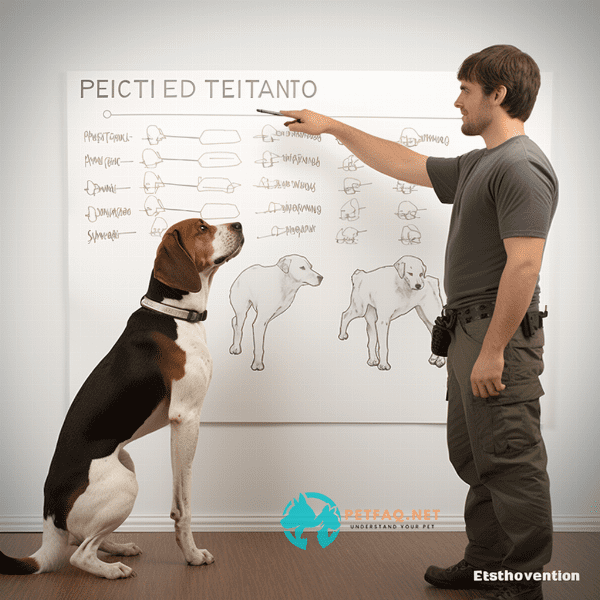
Conditioning Your Hunting Dog for Physical Fitness
Hunting dogs require a high level of physical fitness to perform well in the field. Conditioning your hunting dog for physical fitness is crucial to ensure they have the endurance and strength necessary to perform the tasks required of them. Here are some tips to help you condition your hunting dog for physical fitness:
1. Start Slow – Just like humans, hunting dogs need to build up their fitness level gradually. Start with short walks and gradually increase the distance and intensity of your training sessions.
2. Focus on Cardio – Hunting dogs need strong cardiovascular fitness to keep up with the demands of the hunt. Activities like swimming, running, and hiking are excellent ways to improve your dog’s cardiovascular health.
3. Strength Training – Strength training is essential to improve your dog’s overall physical fitness. Exercises like uphill runs, weight pulling, and balance drills can help improve your dog’s strength and balance.
4. Monitor Your Dog’s Health – Be mindful of your dog’s health and well-being throughout the training process. If you notice any signs of fatigue, injury, or discomfort, be sure to rest and seek veterinary care if necessary.
Conditioning your hunting dog for physical fitness is a long-term process that requires consistency and patience. Regular exercise and a healthy diet are key to keeping your hunting dog in good shape and ready for the hunt. By following these tips, you can ensure that your dog is physically fit and ready for any hunting adventure.
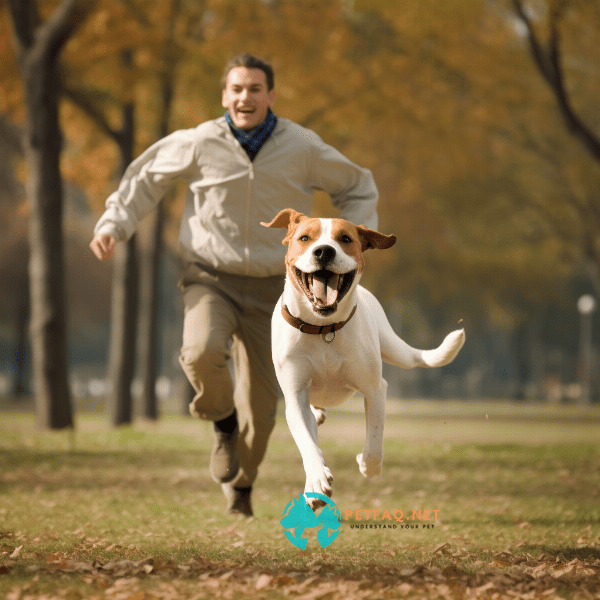
Developing Hunting Skills through Real-Life Scenarios
Developing your hunting dog’s skills through real-life scenarios is essential to ensure that they are prepared for the actual hunt. While training in a controlled environment is useful, it does not simulate the unpredictable nature of the hunt. Here are some tips to help you develop your hunting dog’s skills through real-life scenarios:
1. Introduce Your Dog to the Environment – Take your hunting dog to the location where you will be hunting. Allow them to explore and familiarize themselves with the environment. This will help them become more comfortable in their surroundings and reduce anxiety and stress.
2. Use Realistic Scenarios – Use real-life hunting scenarios to train your dog. For example, have them locate a hidden object, retrieve a dummy, or track a scent. This will help them develop the skills necessary for the hunt.
3. Gradually Increase the Difficulty – Start with simple scenarios and gradually increase the difficulty. This will help your dog develop their skills gradually and build up their confidence.
4. Practice with Other Hunters – Practicing with other hunters can help your dog become familiar with different hunting styles and techniques. This will help them become more adaptable to different hunting scenarios.
By developing your hunting dog’s skills through real-life scenarios, you can ensure that they are prepared for the actual hunt. Remember to be patient and consistent in your training, and your dog will be well-equipped to handle any hunting challenge that comes their way.
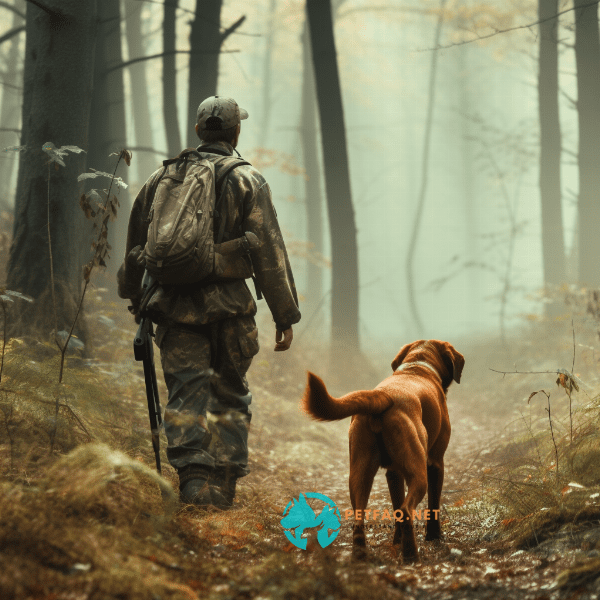
Tips for Successful Bird Hunting with Your Trained Dog
Hunting birds with a well-trained dog can be an exciting and rewarding experience. However, it requires more than just training your dog in the necessary skills. Here are some tips to help you achieve successful bird hunting with your trained dog:
1. Know Your Dog’s Strengths – Every hunting dog has its unique strengths and weaknesses. Knowing your dog’s strengths will help you focus on the areas where they excel and maximize their potential.
2. Plan Your Hunt – Before going out on a hunt, plan your route and know the areas where the birds are likely to be. This will help you to stay organized and focused on the task at hand.
3. Use Proper Gear – Make sure you have the proper gear for bird hunting, including a shotgun, birdshot, bird calls, and hunting attire. Also, bring enough water and food for both you and your dog.
4. Communicate Effectively with Your Dog – Communication is essential when hunting with your dog. Use clear and concise commands to direct your dog and help them locate and retrieve birds.
5. Stay Safe – Always prioritize safety when bird hunting with your dog. Keep your dog on a leash when necessary and be mindful of your surroundings.
By following these tips, you can increase your chances of success when bird hunting with your trained dog. Remember, hunting with a dog is a team effort, and both you and your dog need to work together to achieve a successful hunt.
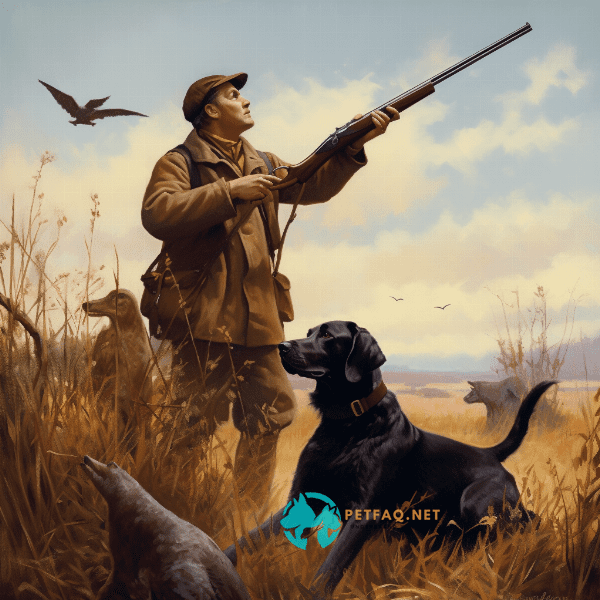
Troubleshooting Common Training Challenges
Training a hunting dog can be a challenging and rewarding experience. However, it is not uncommon to encounter challenges and setbacks during the training process. Here are some common training challenges you may face and how to troubleshoot them:
1. Lack of Focus – If your hunting dog seems easily distracted and lacks focus, consider reducing the distractions during training sessions. Begin training in a quiet, controlled environment and gradually increase the distractions.
2. Disobedience – If your dog is not obeying your commands, it may be because they do not fully understand what is expected of them. Ensure that your commands are clear and consistent and consider reinforcing them with positive reinforcement.
3. Biting or Nipping – Some hunting dogs may exhibit biting or nipping behavior, which can be dangerous. Address this behavior by redirecting your dog’s attention to a toy or another positive outlet for their energy.
4. Fear or Anxiety – If your dog appears fearful or anxious during training sessions, it may be helpful to adjust the training process to reduce stress. Gradually introduce new stimuli and build up your dog’s confidence through positive reinforcement.
5. Overtraining – Overtraining can lead to fatigue and burnout in your hunting dog. Ensure that you are giving your dog enough rest and recovery time between training sessions.
By troubleshooting common training challenges, you can ensure that your hunting dog is on track for success. Remember, training a hunting dog is a process that requires patience, consistency, and understanding. With the right approach, you and your hunting dog can achieve great success in the field.

Building a Strong Bond with Your Hunting Dog through Training.
Training your hunting dog is not just about teaching them the necessary skills for the field. It is also an opportunity to build a strong bond with your dog. Here are some ways you can strengthen your bond with your hunting dog through training:
1. Positive Reinforcement – Use positive reinforcement to reward your dog for good behavior during training. This can include treats, praise, or playtime. Positive reinforcement not only helps your dog learn faster but also builds a strong bond of trust and respect between you and your dog.
2. Spend Time with Your Dog – The more time you spend with your hunting dog, the stronger your bond will be. Spend time training your dog in a variety of environments and engage in activities you both enjoy, such as hiking or playing fetch.
3. Understand Your Dog’s Needs – Every hunting dog has unique needs and preferences. Understanding your dog’s needs, such as their preferred training methods, will help you create a training plan that works for both you and your dog.
4. Be Patient – Building a strong bond with your hunting dog takes time and patience. Be patient with your dog during training, and do not rush the process. Consistency and repetition are key to building a strong bond.
5. Have Fun – Training should be a fun and enjoyable experience for both you and your dog. By incorporating play and fun into your training sessions, you can strengthen the bond with your hunting dog while also achieving great results in the field.
By building a strong bond with your hunting dog through training, you can create a lifelong partnership that will benefit you both in the field and in your daily lives. Remember, the best hunting dog is not just a skilled worker, but also a loyal and trusted companion.
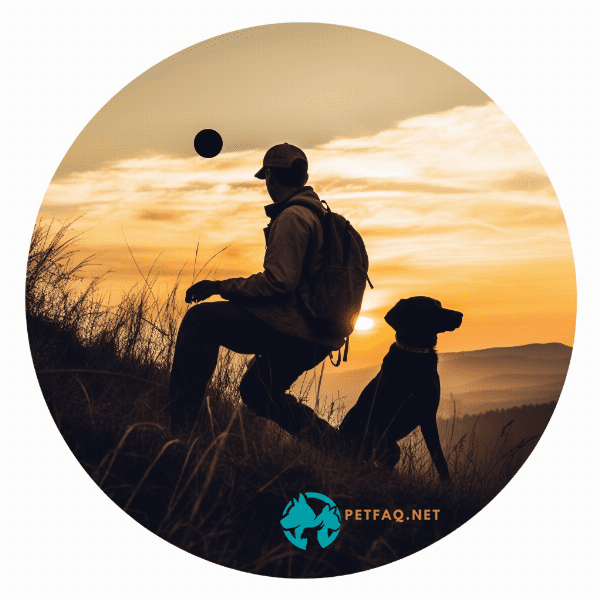
Frequently Asked Questions (FAQs) about Hunting dog training:
1. What are the key characteristics to look for in a hunting dog breed?2. How do you socialize a hunting dog?
3. What are the most popular hunting dog breeds?
4. How do you choose the right hunting dog for your needs?
5. What is the role of positive reinforcement in hunting dog training?

